The appearance of an unpleasant odor that appears shortly after turning on the air conditioner indicates the need for urgent care procedures to solve the problem.
The most common cause of the problem may be the appearance of mold or mildew in the air conditioner, which occurs in the event of a mismatch of the natural temperature and microclimate in the room. The second reason for the frequency of problems may be pollution of air filters, which can not cope with the load due to the accumulation of a large amount of dust.
If a chemical smell arises when the device is turned on, then you should take care of the problem of leakage of antifreeze, which enters the cooling system.
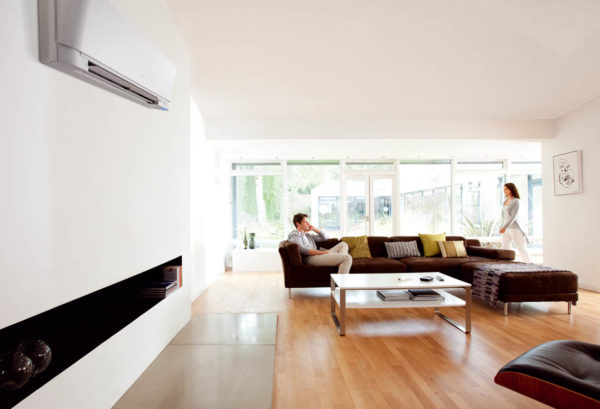
Read more: Visor above the porch: types, how to do it yourself, photo
Tips for removing odor from the air conditioner
- For the sake of an independent solution to the problem at home, it is worth cleaning the main unit.
This procedure does not require specific knowledge or professional skills. It is enough to remove the back panel and use a damp cloth or a handheld vacuum cleaner to get rid of dust particles. Carry out a similar procedure, it is recommended at least once a month to work.
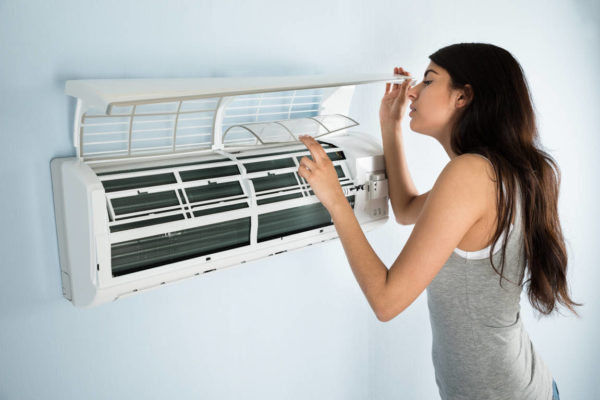
In the case of an allergic person living in a house, such a procedure should take place at least once every two months. At the time of high temperatures and the active phase of flowering plants, the care procedure should be carried out more often, because the load on the system increases, and the quality of ventilation becomes worse.
- For high results of the cooling system, it is worth taking care of the cleanliness of the drainage hose, through which excess moisture and unpleasant odors are removed from the room.
First you need to disconnect it from the air conditioner and wash it thoroughly. You can put it back only after it has completely dried and with the unit turned off.
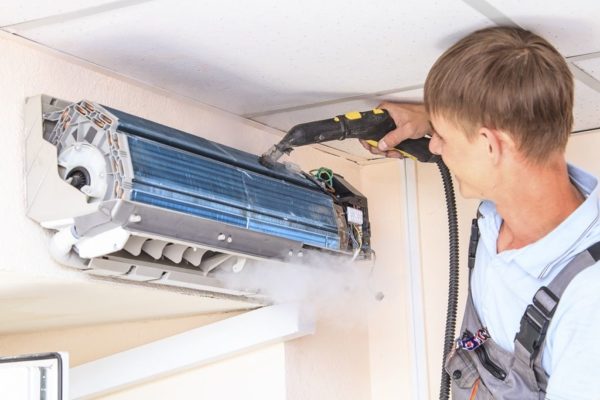
Read more:A wall slide for arranging a living room - the best ideas with a photo
- Filters need to be cleaned both after prolonged use, or simply being in the switched off device.
Most of them are easily cleaned with warm water with foam, but some must be replaced after several seasons of use.
- Modern models are designed in such a way that after turning off the air conditioner, the fan will work for some time, draining the formed moisture.
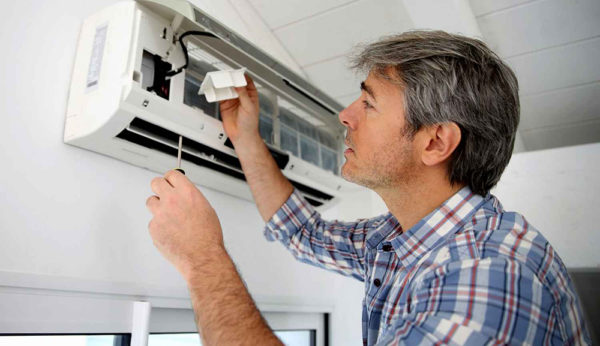
If there is no such function in the device, it will be correct to turn on the fan in a few minutes to completely turn it off. In this case, the delayed condensate will not become a source of unpleasant odors and the rapid spread of bacteria.
Read more:Living room sofas: 2019 fashion ideas
- For the sake of guaranteed disinfection, it is worth periodically arranging the treatment of the air conditioner with special means.
Usually they are sprayed in small quantities in the immediate vicinity of the device itself. Getting together with the air flows into the drainage system, they contribute to the death of fungi and the removal of microparticles.
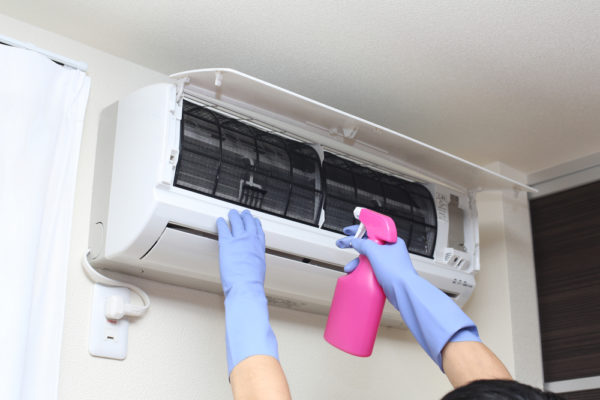
- To help the heat exchanger, you must definitely use a handheld vacuum cleaner or steam cleaner.
This procedure is technically not complicated, but it will greatly facilitate the process of the device, and extend its useful life.
Read more:20 tips for choosing furniture in the hallway
The variety of special tools today will help solve the problem with cleaning the air conditioner, which cannot be ignored. They help to cope not only with pollution, but also destroy small insects, the presence of which can cause breakdown or deterioration in the quality of the device.
When carrying out work, the unit must be de-energized. Switching on is allowed only after all parts have completely dried.
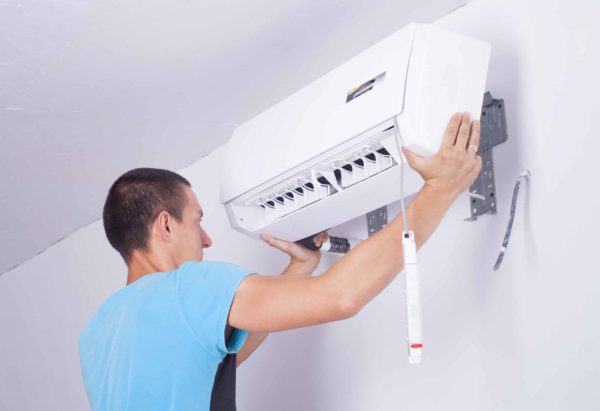
In the case of using disposable filters, you should be puzzled by the presence of a replacement, because they can not be processed. And when the main unit of the air conditioner is located in an uncomfortable place for access or at high altitude, it is best to seek the help of professionals in order to avoid trouble.





Alas, no comments yet. Be the first!